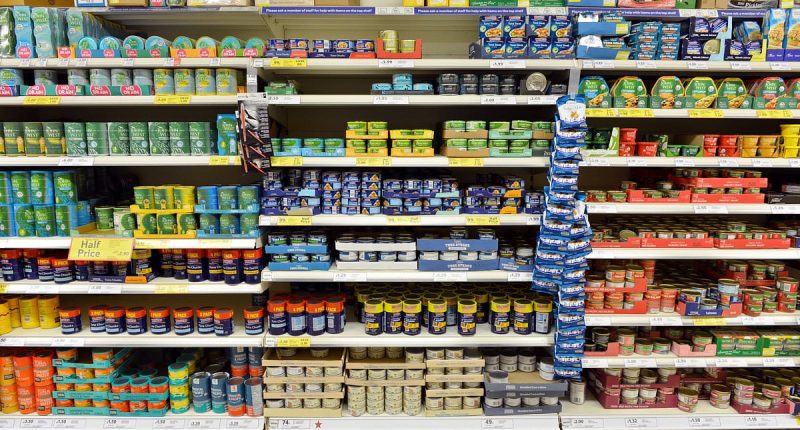Share this @internewscast.com
An office worker has claimed eating tuna three times a day for months left her with life-threatening mercury poisoning.
Nasha Montgomery, 29, from Alabama in the US, spent four months at the end of 2021 batch-cooking salads with tuna for its hefty protein quantity.
She would eat it with crackers for breakfast, in sandwiches for lunch and as a snack at work daily.
It meant she was consuming around six tins in total per week, or around 1.5kg.
But, as she revealed in a recent social media video, she began feeling sick after a couple of months, and suffering muscle cramps, tingling in her hands and feet, and a metallic taste in her mouth.
The results of a blood test taken during a routine check-up came back normal—so she put it down to stress related to her new job in office management.
But when her condition failed to improve she returned to the doctor, who asked if she’d been eating large quantities of any food in particular.
‘I said tuna,’ she recalled. A more detailed blood test subsequently revealed ‘high levels’ of the metal mercury in her body.

Nasha Montgomery, 29, claimed she had mercury poisoning after eating her lunch favourite for months that contained tuna
Doctors diagnosed her with suspected mercury poisoning—when the toxic metal builds up inside the body, causing a range of symptoms including memory problems, numbness, tremors and, in the most severe cases, permanent and lethal brain and kidney damage.
Fish with the highest level of mercury include shark, swordfish, tuna and king mackerel.
According to studies, mercury poisoning is a risk if you eat more than 25 tins of tuna a week, or around 16 tuna steaks.
However some types, like albacore, which Ms Montgomery was eating, contain higher amounts of the metal.
Those trying to have a baby or who are pregnant should not eat more than two cans of tuna or two tuna steaks a week due to the risk of mercury poisoning to a baby.
Speaking of her diagnosis, Ms Montgomery said: ‘I was in shock as I thought I was doing something right by eating the tuna.
‘It was healthy, and the things I was eating the tuna with were also healthy.
‘I felt like I was doing right by myself but too much of a good thing can always backfire.’


She consumed the considerable amount of tinned tuna in a salad she would make that she would put in sandwiches or eat with crackers
Doctors advised her to cut tuna out of her diet for six to eight months, until all the symptoms had vanished.
‘I basically had to detox from tuna. I was detoxing like I was addicted to it,’ she said.
I’m now very careful now about my fish choices.
‘Sometimes I do feel tingly or numbness in my fingers and feet but aside from that I haven’t experienced any long-term effects.’
Treatment options other than stopping exposure for mercury poisoning involve chelation therapy—whereby a machine removes metals from the body via an IV drip.
However, the best treatment option will depend on how you consumed or came into contact with mercury.
For example, other options are dialysis and surgery which can physically remove mercury from the body.
Mercury ends up in fish due to a build-up in the ocean, which happens due to mining and burning coal.
In the UK, the government says the maximum level for mercury allowed in tuna products is 1.0g/kg.
Last year, Foodwatch and Paris-based NGO Bloom, found 148 cans of tuna, from five European countries, all tested positive for mercury.
One tin bought in a Paris Carrefour City store had a record level of 3.9 mg/kg, the report said—13 times the 0.3 mg/kg limit.
Bloom and Foodwatch urged European nations to ‘activate a safeguard clause’ to prevent the sale and promotion of products exceeding 0.3mg/kg.
They also called on governments to remove ‘all products’ with tuna from school canteens, nurseries, maternity wards, hospitals and care homes.
However, the UK Foods Standard Agency said: ‘The study shows a relatively small number of products were above the legal limit.
‘Out of 30 products from the UK market, just one product was found which may be over the legal level.
‘However, we have not seen the individual results or how they’ve been calculated.’













